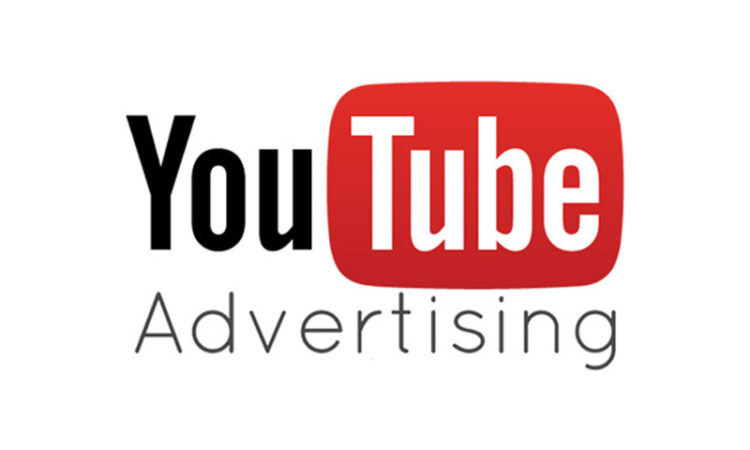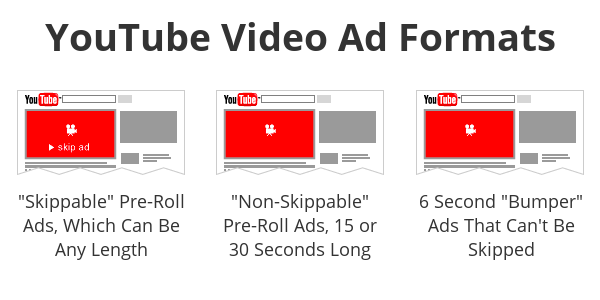
Youtube Ad Campaign
Along with Google Ads, YouTube Advertising has become a very popular marketing tool over the last decade. And since most businesses want to optimize for both Google and YouTube, it’s critical to follow certain strategies in order to avoid wasting your budget.

In this article and our corresponding YouTube Tutorial, we will give you the best strategies and top practices that will help you get started and maximize your budget.
Select the Creative
The golden rule I stick to is a simple one: ONE creative per campaign. Why? Well, If you have multiple creatives within a campaign, it will make audience targeting, budgeting, and overall performance more difficult to manage. Here are a few additional directions:
-If you have two versions of the same creative, say one 30 second video and one 15 second video, these are two different creatives. In my experience, performance is drastically different for different creative lengths. Best practice is to create a separate campaign for each creative.
-If performance varies per geographic location, or you have separate budgets for different geos, demographics, or steps in the funnel, you will need to create separate campaigns. This should at least mirror what you have set up for Search campaigns.
-Because the creative itself is a whole different topic, this article will not cover the aspects of what makes a good creative. However, I do have one critical point I want to mention: Branding must appear in the first 5 seconds. I have worked with companies who only brand their videos at the very end because they achieve higher view-through rates (VTR). The ad may have a great VTR, but most people aren’t going to watch a video ad in its entirety. Waiting to brand at the end is giving people free entertainment. You are throwing money away if you can’t at least get a lift in brand recognition or consideration.
Targeting Audiences
When you are setting up a new video ad campaign in Google Ads, you are asked to select your targeting method. And while there are other options, we recommend focusing your targeting on audiences like Re-marketing, Similar, In-Market, Custom Intent, and Life Events audiences. They can be used for any campaign type and will help you get your ad in front of the exact right viewers. These audiences also tend to work better when you are trying to drive leads and sales for your business.

In addition, you can target detailed demographics, affinity audiences, and custom affinity audiences; but they tend to be very broad and can spend your advertising dollars much quicker. You can watch our video below for more information on targeting Google audiences
Campaign Specifics Strategy
When creating a new campaign, I find the following 6 components to be of critical importance:
1.) Bid Strategy
- Maximum CPV: (recommended for the type of strategy this blog is covering) Cost-per-view allows you to create in-stream or discovery ads. Use this strategy for prospecting audiences.
- Maximum CPM: Use cost-per-thousand impressions if you’re using remarketing bumper ads.
- Target CPM: Set the average amount you’re willing to pay for every thousand times your ad is shown.
2.) Inventory Type – note that all types exclude extremely sensitive content
- Expanded Inventory: Use this inventory type if you want to maximize your reach by showing ads on some sensitive content.
- Standard Inventory: Use this inventory type if you want to only show ads on content that’s appropriate for most brands.
- Limited Inventory: Use this inventory type if you want to exclude most types of sensitive content. This will limit your available inventory, but it will ensure you won’t serve ads on content with moderate profanity or moderate sexually suggestive content.
- When you select an Inventory Type, you can view a more comprehensive comparison.
3.) Frequency capping: I recommend capping impression and/or view frequency:
- Impression and View caps can be set per day, per week, and per month. You can also set the cap at the campaign, ad group, or ad level.
- Determine the cap based on how large your target audience is. Keep in mind any goals you have set for your campaign.
- Prospecting campaigns: If you have a massive prospecting audience, this may not be necessary. However, I recommend setting a cap of 10 impressions per day per campaign and a view cap of 1 per day per campaign.
- Remarketing campaigns: I highly recommend stricter caps for remarketing campaigns. So that you don’t become the brand that drives consumers nuts ( this is every cell phone carrier ad I see). As a general rule, I set caps that are half of what I set for prospecting campaigns.
- Adding negative audience lists is another safeguard. For example, you could exclude traffic for site visitors who have viewed a certain page on your site.
4.) YouTube Video
- An obvious point, but your it’s important to know your ad must be on your YouTube channel.
- If you haven’t linked the YouTube channel to your Google Ads account, navigate to “Tools” in Google Ads and select “Linked Accounts”. Follow the instructions to link accounts.
- If you are creating the campaign in the Editor, you will enter the Video ID. The Video ID can be copied after “v=” in the YouTube Video URL.
- Call-to-action: CTAs are only allowed for TrueView in-stream video ads in “Video – Drive Conversions” campaigns.
5.) Exclude Mobile Apps:
Unless you know mobile app advertising will benefit your business. I recommend excluding mobile apps during campaign set up. The easiest way to do this is in the Editor:
- Navigate to “Mobile app categories, Negative” under “Keywords and Targeting”
- Select “All Apps” under “Add Negative Mobile App Category”
Target Your New YouTube Subscribers
While you are creating Remarketing Audiences for conversions. You can also create them for new subscribers to your YouTube Channel in the last 30 days. You can use this list to target those subscribers with different advertising campaigns. This can be extremely effective to help keep the interest high for new subscribers.
You can also look at different options in the same menu to see what other kinds of specialty remarketing lists you can create, such as video views, channel page visitors, etc.
Use YouTube Video Discovery Ads
As mentioned above, at the new campaign screen you will have the option to select what type of ad format you would like to use. While we recommend utilizing and testing all available formats, we do recommend focusing on Video Discovery Ads. These thumbnail ads appear in YouTube search results and alongside videos and give people the option to click before they view; simply put, you are not forcing people to watch your video. This helps ensure that people actually have an interest in your video; which will, in turn, grow your YouTube views.
Create Professional Videos
If you are not familiar with the video creation process, it can be helpful to invest in professional help. There are a lot of different services available such as Shakr and InShot that will help you create more professional videos.

And as a bonus, when you take the time and money to invest in professional videos, you can use them on your website and social media channels, in addition to your YouTube Advertising efforts. By creating quality videos that strongly represent your brand, you are increasing the likelihood of targets wanting to use your products and/or services.
Conclusion
This blog has given you the direction you need to either launch your first YouTube campaign or enhance your current strategy.
If you don’t think you have great creative, don’t wait to test TrueView – use a small budget and test what creatives you have so you can begin to hone your strategy. I will use future blogs as an opportunity to expound on what I have covered here. Future topics may cover: what YouTube metrics matter, what makes a good creative, and how YouTube and Display campaigns can be used together.








What do you think?